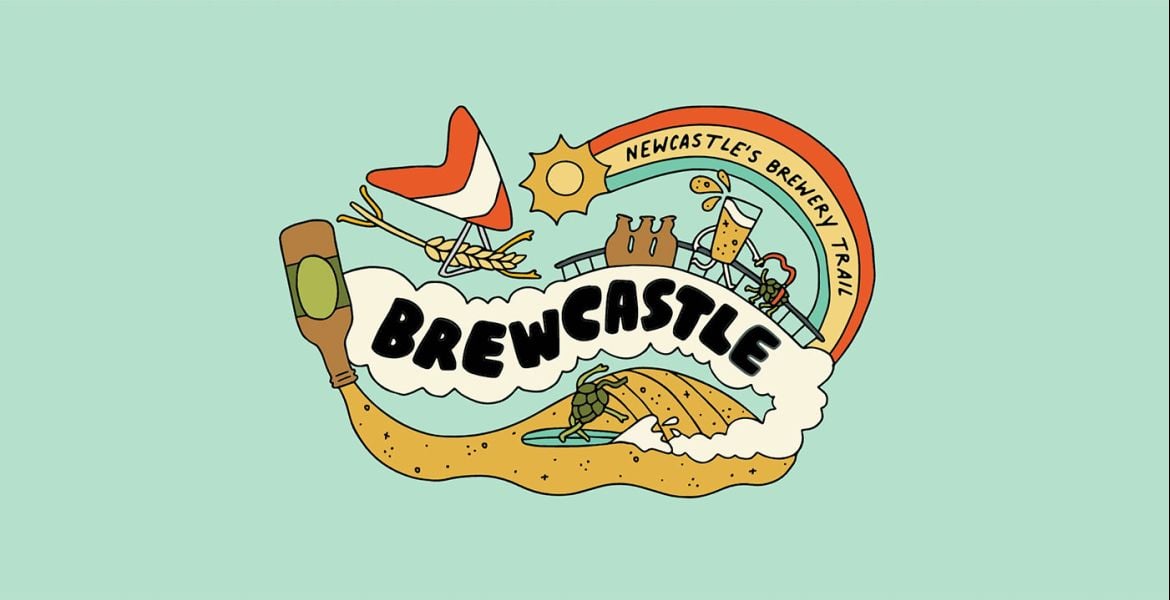If there is one thing New Zealanders and Australians have in common, it is sticking it to The Man. It is no coincidence cult movie The Castle is loved by people on both sides of the Tasman. But it's likely few people know about Kapiti Island’s own little piece of rebellion, or what it has to do with beer.
Most people assume the island, which juts out of the sea on your left as you snake north along the lower North Island’s west coast, is fully owned by the government after they confiscated it from farmers. But the small inconspicuous northern tip of the island, seemingly pulling the island into the ocean, is independently owned by the whanau (family) of Te Rangihiroa, who led a migration of Maori from Waikato to the island many generations ago.
North End brewer Kieran Haslett-Moore says if it was not for one member of that whanau, who he describes as a “really staunch lady”, standing up to the government, one of his brewery’s coolest projects would never have got off the ground – putting the north end into North End.
The project is the latest in what is set to become a long list of spontaneously fermented beers released by the Waikanae brewery, which will make up a small segment of the ever-increasing range of spontaneous beers New Zealand breweries are producing. While kettle-soured and Brett-fermented beers have been around for some time, spontaneous beers – where nothing but the microbes floating around in the air – are the final frontier.
And Kiwi brewers are diving in head first, ranging from 50-litre batches the tweed-clad pair behind Craftworks serve via English handpumps through to Garage Project’s massive Wild Workshop space in central Wellington, where various experimental journeys into the world of wild fermentation are taking place.

Kieran, though, could call himself the finest producer of spontaneous beer in the country. North End Rustica was the first spontaneous beer to ever win a gold medal at the Brewers Guild of New Zealand awards when it took home a medal in 2016. Firmly acidic with a refreshing juiciness, Rustica has already been joined by a blackberry-infused cousin Eucharist, while a blend of old and new spontaneous should be out by the end of 2017.
But Kieran is not doing things exactly by the book. Coolships – large square shallow vats where hot wort is pumped to cool overnight, collecting microbes in the process – are how Belgian brewers traditionally get spontaneous ferments going, with the cool night air cooling down the wort. That is how Te Aro Brewing is planning on making spontaneous beer for its 300-plus barrels when it moves to a new site, neighbouring Panhead Custom Ales, in Upper Hutt. Kieran, however, takes a different approach – one which sees him steer well away from calling his beer lambic.
He takes small amounts of wort, leaves it out in the brewery to catch the microbes, cools it in his chiller overnight, then lets it ferment in small kegs in the brewery before pitching into barrels filled with fresh wort.
“We’re aiming for some products that resemble lambics,” he says. “We are using aged hops and are taking lessons from what they do. But, from there, it is just a long game of trial and error.”
One thing he has noticed is his brewery’s tendency to produce microbes that create "hard barrels". He describes the beers he has released so far as being “brutishly acidic” – something beer judges do not seem to mind – and needing a bit more finesse. Tinkering with hopping rates should help create soft barrels, which will give him more options when it comes to blending a gueuze-style beer.
A quick tasting tour through the barrel stock also shows a big difference between the brewery ferments and the Kapiti Island beer. While the brewery ferments are harsher, bigger and brasher, the Kapiti Island beer was reeking of freshly cut fruit and honey a month into fermentation. While all that fruit in the Kapiti Island beer will drop away, Kieran sees it as a good sign.
“Super fresh, weeks-old lambic is renowned to be like the most hefeweizen-tasting hefeweizen you’ll come across," he says. "Bursting with apples, pears and bananas, and ester for ‘nam.”
It could have something to do with location. The spot on Kapiti Island where Kieran sourced his microbes from could not be more different from his brewery.
“We found a perfect spot under a grove of kanuka [a native tea tree] and popped a keg of wort out there, had lunch, and picked it up a few hours later. I cheated a little bit," he admits, "by picking kanuka flowers off the tree and popping it in the starter.”

But if taking a keg of wort out to an island sounds like a long way to go for beer, Brayden Rawlinson’s plan is nothing short of extreme. Well known in Wellington brewing circles for his occasional releases under his Nine Barnyard Owls brand, including the pun-errific Belgian golden ale Duvowl, the former cricket groundsman jumped The Ditch when given the opportunity to work in Sydney for Nomad Brewing.
But it is a project back home which has him excited. He is in the process of setting up a blendery at an old vineyard in Gladstone, Wairarapa, that his family has owned since 2003. Being family owned was a bonus, but being close to the ingredients he wants to use in his spontaneously fermented beers was a driving factor in his decision.
“Gladstone is an area more commonly associated with grapes and vineyards," he says. "It has a high diurnal range [the difference between daily maximum and minimum temperatures] and is well suited for growing grain crops, grapes and orcharding.”
Brayden intends to stay at Nomad while working on the blendery, with family back in New Zealand doing what he cannot. Going by his experiments so far, which he often discusses on the sour beer Facebook page Milk The Funk, his family are going to be busy tending to all manner of barrels filled with wort, local fruit and a dizzying range of grape varieties.
His personal experience with brewing spontaneous beers there, on weeks away from Wellington while working full-time in nearby Masterton, means he knows what to expect from the local microbes.
“There is huge potential on this front at this site, which is why I want to dedicate some time and money into exploring this further, but on a much larger scale – coolship, barrels and all.
“I know it sounds cheesy, but I also like the idea of encapsulating a little piece of the world I love so much in a bottle. I want to create something unique and work with what is available in the environment around where the blender will be. I also want to encapsulate and further express the terroir of the Gladstone region in a beer instead of a wine, which the region is best known for.
“It’s sink or swim, but preferably the later!”
You can read Jono's other articles for us here and other coverage of the NZ beer scene here.
Keep up with Jono elsewhere on the internet on Twitter, or his beer blog From Drinker to Brewer, which you can also follow on Facebook.



















